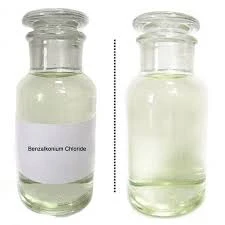Safety Data Sheet Overview for Polyaluminum Chloride Handling and Usage
Understanding Polyaluminum Chloride (PAC) and Its Safety Data Sheet (MSDS)
Polyaluminum chloride (PAC) is a widely used coagulant in water treatment, responsible for removing impurities and helping in the purification process of drinking water, wastewater treatment, and various industrial applications. Its chemical formula can be represented as Al₂(OH)nCl₆-n, where the value of n can vary, resulting in different forms of PAC. Understanding the material safety data sheet (MSDS) for PAC is essential for ensuring its safe handling and application.
Properties of Polyaluminum Chloride
PAC is a versatile compound with properties that make it effective in coagulation processes. It typically appears as a white to yellow-tinted powder or a clear solution, depending on its formulation. The solubility of PAC in water is high, and it exhibits a relatively low molecular weight, which contributes to its efficiency in aggregating fine particles in water. This makes PAC particularly useful in both municipal and industrial settings, where it aids in removing turbidity and organic matter from water.
Applications of Polyaluminum Chloride
The primary application of PAC is in water treatment facilities. It is used to clarify drinking water by precipitating suspended particles, thereby reducing turbidity. Additionally, PAC is employed in industrial processes, such as paper manufacturing, textiles, and the production of beverages, where clarification is vital. Its ability to effectively bind with various contaminants makes it suitable for use in mining operations, oil drilling, and other industries concerned with environmental remediation.
Safety Considerations
Understanding the MSDS for PAC is crucial for safe handling and preventing potential hazards. The MSDS provides detailed information about the chemical, including
1. Composition and Ingredients The MSDS outlines the composition of PAC, including its chemical identity and any potential impurities that may be present.
polyaluminum chloride msds

2. Hazard Identification PAC is generally considered non-toxic and safe for use in water treatment when handled according to the guidelines. However, inhalation of the dust or skin contact may lead to irritation. The MSDS emphasizes the importance of avoiding exposure to concentrated forms of PAC.
3. First Aid Measures In case of exposure, the MSDS details first aid procedures. For example, if PAC comes into contact with the skin, it should be washed off with plenty of water. If inhaled, moving the person to fresh air is advised.
4. Fire Fighting Measures Although PAC is not flammable, the MSDS describes the appropriate extinguishing media to use in the event of surrounding material catching fire.
5. Handling and Storage Proper handling and storage instructions are vital to maintain the stability of PAC. It should be stored in a cool, dry place, away from incompatible substances. Users are advised to use personal protective equipment (PPE) such as gloves and safety goggles during handling.
6. Disposal Considerations The MSDS recommends following local regulations for disposal. PAC should not be disposed of in waterways or drains, as it may adversely affect aquatic life.
7. Environmental Impact While PAC is effective in removing pollutants from water, its disposal must be managed responsibly to avoid environmental harm. The MSDS provides guidance on minimizing negative environmental effects.
Conclusion
Polyaluminum chloride is an essential chemical in water treatment and various industrial applications, known for its effectiveness in coagulation and clarification processes. The availability of a comprehensive MSDS is critical in facilitating safe handling, use, and disposal. By understanding the properties and safety measures associated with PAC, users can prevent accidents and ensure compliance with health and environmental regulations. Awareness and adherence to the information contained in the MSDS will contribute to safer practices in industries that utilize this important chemical. Proper education and safety protocols can significantly mitigate risks associated with polyaluminum chloride, paving the way for its continued successful application in water treatment and other sectors.
-
The Ultimate Guide to Flocculants: Transforming Water TreatmentNewsNov.01,2024
-
Improve Your Water Treatment Solutions with PolyacrylamideNewsNov.01,2024
-
Enhance Your Water TreatmentNewsNov.01,2024
-
Empower You to Achieve the Highest Standards of Water QualityNewsNov.01,2024
-
Effective Scale InhibitorsNewsNov.01,2024
-
Discover the Power of Poly Aluminum Chloride in Water TreatmentNewsNov.01,2024





